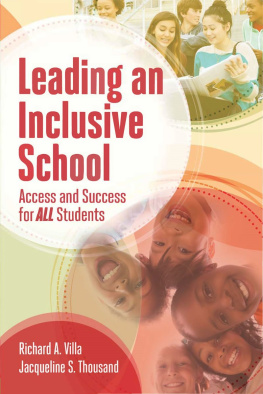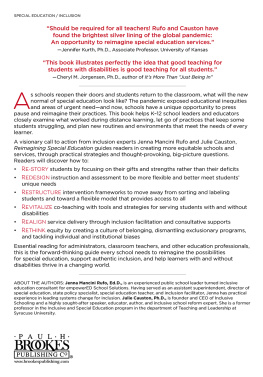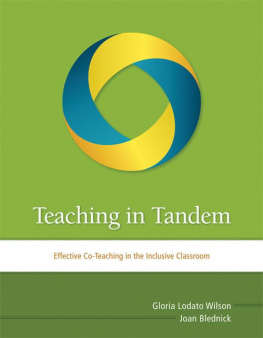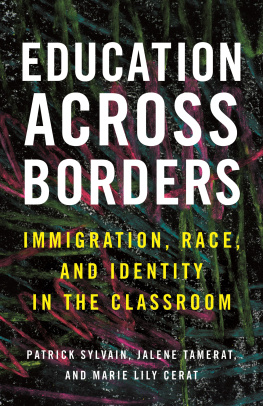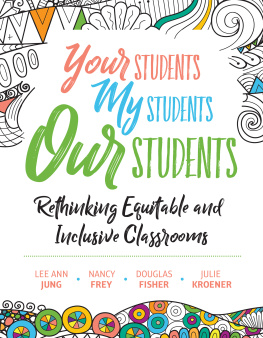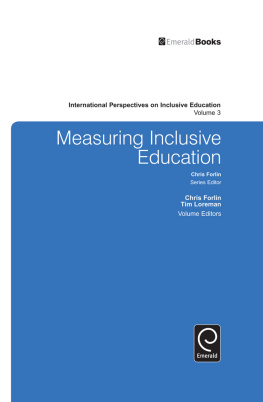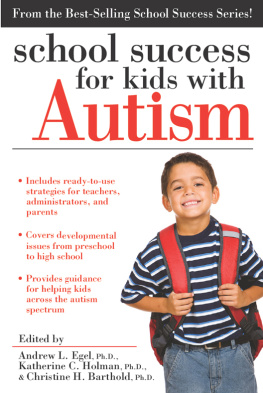Letter to the Reader
....................
In 1975, Congress passed the Education for All Handicapped Children Act (EAHCA, Public Law [P.L.] 9442), which guaranteed for the first time that all students with disabilities would receive a free and appropriate public education (FAPE) and learn in the least restrictive environment (LRE). When reauthorized in 1990, the name of the law was changed to the Individuals with Disabilities Education Act (IDEA, P.L. 101476), and in 2004 it was amended by the Individuals with Disabilities Education Improvement Act (IDEIA, P.L. 108446). Over the past 40 years, the law has been codified and provided a solid foundation for advancements related to inclusive schooling.
Amendments to IDEA in 1997 and 2004 have greatly strengthened the presumption that the placement of first choice for students with disabilities should be in the general education classroom, where they most readily have access to the rigorous general education curriculum and to the same co-curricular options as their classmates. As a result, the percentage of students with disabilities educated within general education environments has increased steadily.
Further bolstering IDEA is the Every Student Succeeds Act (ESSA, P.L. 114-95), the 2015 reauthorization of the 1965 Elementary and Secondary Education Act (ESEA; P.L. 89-10). The ESSA allows states greater flexibility in administering student learning accountability systems than did the legislation it replacesthe 2001 No Child Left Behind Act (NCLB, P.L. 107110)but maintains ESEA's legacy as a civil rights law by
ensuring that states and districts hold schools accountable for the progress of every student subgroup (e.g., students with disabilities);
continuing to dedicate resources and supports so that students with disabilities, English learners, and vulnerable student subgroups (e.g., children of low-income, homeless, or migrant worker families) have equitable access to rigorous curriculum and quality educators; and
requiring districts to use evidence-based, whole-school interventions in their lowest-performing schools and in schools where subgroups (e.g., English learners, students with individual education programs) persistently underperform.
In short, ESSA reflects an increased public expectation that schools foster and be held accountable for maintaining high educational standards, equal opportunities for learning, and academic excellence for all students.
Our main reason for writing this book is that, 40 years after IDEA first came into effect, many educators still do not understand it or how to implement it and its accompanying legislation. And although schools and districts across the country have been educating students with disabilities in inclusive settings for many years, there remain many that have a long way to go toward implementing the spirit and the letter of IDEA. Too often, families still have to fight to get their children into general education classrooms and inclusive settings. What's more, some educators erroneously believe they are implementing inclusive practices when in fact they are not offering their students the academic and social support and differentiation that they require to succeed.
Schoolwide supports for all students have evolved significantly since IDEA was first signed into law. Proactive Universal Design for Learning (UDL) approaches to lesson and unit planning are replacing after-the-fact adaptations for select students. Frameworks such as Multitiered System of Supports (MTSS), Response to Intervention (RTI), and Schoolwide Positive Behavior Support (SWPBS) systems are in place at more and more schools, and some are specifically called for by state departments of education. Cross-disciplinary teaming and co-teaching are rapidly becoming standard practice for differentiating instruction by weaving the knowledge and skills of the "masters of content" (i.e., general educators) with those of the "masters of access" (i.e., special educators, English language development specialists, related service personnel, and other specialists). In the chapters that follow, we hope to illuminate the many components of a new emerging schoolhouse model of inclusive education.
It is our experience that people often find the prospect of change daunting and tend to assume that others with greater authority or knowledge than them must surely be responsible for leading the way. But why not assume instead that leadership takes many forms and can come in many sizes? Why not adopt the conceptualization of leadership that noted group-theory experts Johnson and Johnson (2009) have to offer? If we define leadership as any action that helps to accomplish a task or to build interpersonal relations among those working together, every one of us has the capacity to lead change toward more inclusive schooling.
We hope that you will find this book a valuable addition to your professional library and that it will assist you in leading to advance school cultures that welcome, value, empower, and support the success of every child.
References
Elementary and Secondary Education Act of 1965 (ESEA PL 89-10). Retrieved from https://www.gpo.gov/fdsys/pkg/STATUTE-79/pdf/STATUTE-79-Pg27.pdf
Every Student Suceeds Act. (2015). The 2015 reauthorization of the Elementary and Secondary Education Act (PL 119-45). Retrieved from www.ed.gov/essa?src=rn
Johnson, D. W., & Johnson, F. (2009). Joining together: Group theory and group skills (10th ed.). Boston: Allyn & Bacon.
No Child Left Behind. (2001). The 2001 reauthorization of the Elementary and Secondary Education Act (HB1). Retrieved from https://www.congress.gov/bill/107th-congress/house-bill/1
Section I
....................
Before launching into the how of creating an inclusive school, we offer here two chapters and one Voice of Inclusion to set the stage for the strategies presented in subsequent chapters.
" offers a family's perspective on inclusive education.
Chapter 1
An Inclusive School: Providing Access and Success for All
Mary A. Falvey and Christine C. Givner with Richard A. Villa and Jacqueline S. Thousand
....................
There is only one child in the world and the child's name is ALL children.
Carl Sandburg
An Inclusive Classroom in Action
What does an inclusive school look and sound like? The following scenario describes a freshman language arts class on a typical day in the life of 32 students attending an ordinary yet extraordinary high school in a large urban school district.
It is 3rd period in Mr. Rice's freshman English language arts class, and the 32 students have just finished "reading" the final chapter of To Kill a Mockingbird by Harper Lee (1960). Students have listened to the book using text-to-speech software, read versions of it written at lower readability levels, or read it in both English and their native language to accommodate their limited English literacy levels. All the students have either created or been given graphic organizers to help them organize key ideas. The students have been working on the California English Language Arts standards while reading the book. Although the students have diverse learning styles and abilities, all are challenged in meaningful ways that relate to the state standards. Mr. Rice has just assigned a culminating task for partners to creatively depict how the characters in

